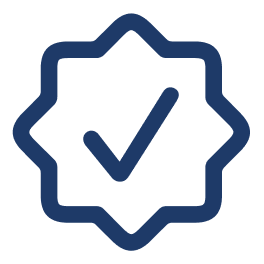Writing a resume in English can be daunting, especially if you’re not yet fluent in the language. However, with some useful tips and strategies, you can craft a professional resume that clearly showcases your skills and experiences to potential employers.
Understanding the Basics of Resume Writing
Before delving into the specifics of resume writing in English, it’s essential to understand what a resume is. A resume is a formal document that provides an overview of your professional history, skills, and accomplishments. Its purpose is to present you as a suitable candidate for a specific job position. It is a crucial element in the job application process.
What's your English level?
Discover your level now: A1/A2/B1/B2/C1/C2 and GET your certificate!
Key Components of an English Resume
There are several components that make up a well-rounded resume. These components help employers quickly assess your qualifications:
- Contact Information: Include your full name, phone number, email address, and LinkedIn profile if available. Make sure these details are up-to-date and error-free.
- Summary or Objective: A brief section at the top that outlines your career goals or a summary of your professional background.
- Professional Experience: List your work experience starting with the most recent job. Include the employer’s name, position title, and the duration of employment, using bullet points to describe your responsibilities and achievements.
- Education: List your educational qualifications beginning with the most recent institutions you attended. Include the degree, institution’s name, and graduation date.
- Skills: Highlight any technical, language, or soft skills that are relevant to the job you are applying for.
- Additional Sections: Depending on your background, you may want to include certifications, languages spoken, volunteer work, or publications.
Tips for Writing an English Resume If You’re Not Fluent
Writing a resume in a non-native language can be challenging, but here are some tips to guide you:
Use Simple Language
When you are not fluent in English, using simple language can help ensure clarity. Avoid complex sentences, and opt for straightforward language that succinctly communicates your qualifications. You can refer to resources such as the Cambridge Dictionary to confirm word usage and spelling.
Utilize Action Verbs
Action verbs add impact to your resume, making it more compelling. Start each bullet point in your experience section with a strong verb such as “led,” “developed,” “achieved,” or “implemented.” These words convey action and show your initiative in previous roles.
Be Mindful of Grammar and Spelling
Grammar and spelling mistakes can undermine the professionalism of your resume. Use online tools like Grammarly to double-check your text for errors. Additionally, have someone fluent in English review your resume for added assurance.
Highlight Transferable Skills
If you lack work experience, emphasize skills gained through education or volunteer work, especially those that are adaptable across various job roles. For example, communication and teamwork are highly valued in many industries.
Using Templates to Guide Your English Resume
A template can serve as a helpful guide when writing your resume in English. High-authority dictionaries often provide sample resumes in English for learners to use. Templates can ensure that all necessary elements are included and formatted consistently.
The Importance of Editing and Proofreading
Proofreading is a crucial step in the resume writing process. It involves reading your resume multiple times to catch any overlooked mistakes and ensuring that the document flows logically. It’s advisable to take a break after writing and then review the document with fresh eyes to spot any remaining errors.
Adapting Your Resume for Different Jobs
It’s important to tailor your resume to match the job description. This involves using keywords found in the job posting and adjusting your summary, experience, and skills sections to better fit the requirements of each specific position. For instance, if a job requires project management experience, highlight relevant projects you’ve managed.
Final Steps Before Submitting Your Resume
Before submitting your resume, ensure that it is saved in a standard format, such as PDF, to maintain formatting consistency. Finally, double-check that your contact information is correct so that prospective employers can reach out to you.
Enhancing Your English Resume
One effective way to enhance your English resume is to quantify your achievements. Instead of just listing responsibilities, include measurable results to showcase the impact of your work. For instance, you can mention how you increased sales by a certain percentage or reduced operational costs.
Case Study: Improved Customer Satisfaction
To illustrate the power of quantifying achievements, consider the following example: ‘Implemented a customer feedback system that led to a 20% increase in overall customer satisfaction ratings.’ This specific result not only demonstrates your proactive approach but also highlights the tangible benefits of your contribution.
Using Keywords for ATS
Many companies use Applicant Tracking Systems (ATS) to filter through resumes. To increase your chances of passing through these systems, incorporate relevant keywords from the job description into your resume. This alignment shows that your qualifications match the requirements of the position.
Q&A: How Long Should My Resume Be?
The ideal length of a resume is typically one page, especially for entry-level to mid-level professionals. However, if you have extensive experience, it is acceptable to extend to two pages. Remember, the goal is to provide concise and relevant information to the employer.
The Evolution of Resume Formats
Over time, resume formats have adapted to technological advancements. Today, it is common for resumes to be submitted electronically, leading to the rise of formats like PDF or Word. These formats ensure that your resume maintains its structure and appearance across different devices.
You can check your English level using the GET Global English Test.
Remember, a well-crafted resume can open the doors to new job opportunities, even if English is not your first language. With these tips, you’re ready to present a polished and professional resume to employers.




